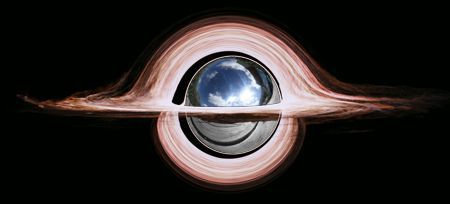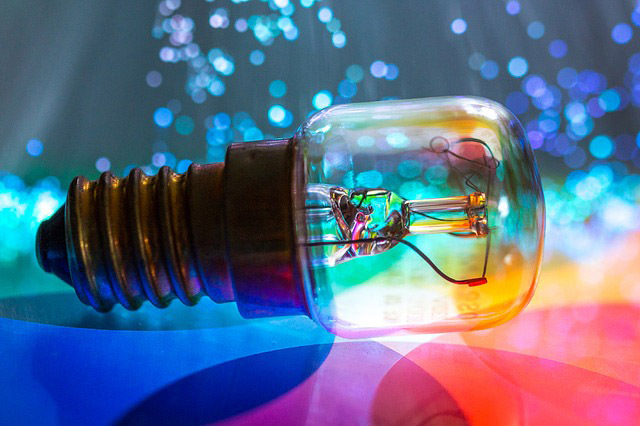“Still got questions, Moire.”
“This’ll be your last shot this year, Mr Feder. What’s the question?”
“They say a black hole absorbs all the light that falls on it. But the theory of blackbody radiation says a perfect absorber is also a perfect radiator. Emission should be an exact opposite flow to the incoming flow in every direction. Wouldn’t a black hole be shiny like a ball bearing?”
“A perfectly good question, but with crucial imperfections. Let’s start with the definition of a perfect absorber — it’s an object that doesn’t transmit or reflect any light. Super-black, in other words. So by definition it can’t be a mirror.”
“OK, maybe not a mirror, but the black hole has to send out some kind of exact opposite light to balance the arriving light.”
“Yes, but not in the way you think. Blackbody theory does include the assumption that the object is in equilibrium, your ‘exact opposite flow.’ The object must indeed send out as much energy as it receives, otherwise it’d heat up or cool down. But the outbound light doesn’t necessarily have to be at the same frequencies as the inbound light had. In fact, it almost never will.”
“How come not?”
“Because absorption and emission are two different processes and they play by different rules. If we’re including black holes in the discussion there are four different processes. No, five. Maybe six.”
“I’m listening.”
“Good. Blackbody first. When a photon is absorbed by regular matter, it affects the behavior of some electron in there. Maybe it starts spending more time in a different part of the molecule, maybe it moves faster — one way or another, the electron configuration changes and that pulls the atomic nuclei away from where they were and the object’s atoms wobble differently. So the photon raises the object’s internal kinetic energy, which means raising its temperature, and we’ve got energy absorption, OK?”
“Yeah, and…?”
“At some later time, to keep things in equilibrium that additional energy has to be gotten rid of. But you can’t just paint one bit of energy red, say it’s special and follow it until it’s emitted. The whole molecule or crystal or whatever has excess energy as the result of all the incoming photons. When the total gets high enough, something has to give. The object emits some photons to get rid of some of the excess. The only thing you can say about the outbound photons is that they generally have a lower energy than the incoming ones.”
“Why’s that?”
“Think of a bucket that’s brim-full and you’re dumping in cupfuls of water. Unless you’re pouring slowly and carefully, the dribbles escaping over the bucket’s rim will generally be many small amounts sloshing out more often than those cupfuls come in. For light that’s fluorescence.”
“I suppose. What about the black hole?”
“The problem with a black hole is the mystery of what’s inside its event horizon. It probably doesn’t contain matter in the form of electrons and nuclei but we don’t know. There are fundamental reasons why information about what’s inside can’t leak out to us. All we can say is that when a light wave encounters a black hole, it’s trapped by the intense gravity field and its energy increments the black hole’s mass. The mechanism … who knows?”
“Like I said, it gets absorbed. And gets emitted as Hawking radiation.”
“Sorry, that’s exactly what doesn’t happen. Hawking radiation arises from a different pair of processes. Process 1 generates pairs of virtual particles, which could be photons, electrons or something heavier. That happens at a chaotic but steady rate throughout the Universe. Usually the particle pairs get back together and annihilate. However, right next to the black hole’s event horizon there’s Process 2, in which one member of a virtual pair flies inward and the other member flies outward as a piece of Hawking radiation. Neither process even notices incoming photons. That’s not mirroring or even fluorescence.”
“Phooey, it was a neat idea.”
“That it was, but facts.”
~~ Rich Olcott
- Thanks to lifeisthermal for inspiring this post.
- Thus endeth a full year of Sy Moire stories. I hope you enjoyed them. Here’s to a new year and new ideas for all.





